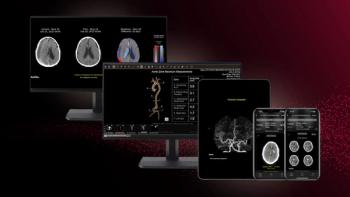
10 Precautions for Imaging Pregnant Women During COVID-19
Iranian Society of Radiology releases recommendations for CT scans in pregnant women with suspected viral infection.
Pregnancy is already a time of vulnerability when women can develop dangerous conditions or suffer more serious consequences from contagious diseases. And, COVID-19 is no different.
Unfortunately, contracting the virus and developing COVID-19 pneumonia can also mean that these women need CT scans to effectively monitor and help manage their condition, increasing not only their radiation exposure, but that of their unborn child, as well.
To help providers safely image these patients – and control the radiation dose as much as possible – experts from the Iranian Society of Radiology, led by Mohammad Ali Karimi, M.D., a radiologist with Shahid Beheshti University of Medical Science, released imaging guidelines on April 18 in
Related Content:
According to the team, the maximum permitted radiation dose exposure in pregnant women is below 50 mGy, and the absorbed radiation dose for a fetus whose mother undergoes a chest X-ray or CT scan is 0.002 mGy and 0.2 mGy, respectively. These levels have not been associated with any adverse effects on fetal health, and have been deemed safe.
The team made these recommendations for imaging pregnant women:
1. Avoid radiation imaging modalities, including chest X-ray or CT scans, in pregnant women with suspected COVID-19 infection as much as possible.
2. Conduct a thorough examination before running a chest X-ray or CT scan. Rule out differential diagnoses of respiratory problems and pulmonary edema.
3. Be sure your patient fully understands the necessity, benefits, and risks of the imaging procedure.
4. If the patient’s physician requests a chest X-ray or CT scan, follow these steps to endure maximum protection:
- Mark the CT scan in red in the hospital’s electronic medical record.
- Coordinate for patient transfer to the radiology department that has been disinfected when no other patient is there.
- Place the patient’s files in a red cover.
- Mark the patient’s clothing to reflect that she is high-risk.
5. Use the lowest possible dose for chest X-ray and CT scans.
6. Use abdominal lead shields to protect the fetus.
7. Make personal protective equipment, including masks, gloves, gowns, goggles, and disinfectants, available for patients and all personnel associated with the procedure.
8. If imaging is necessary during the first trimester, begin with chest X-ray with abdominal shields, and proceed to CT only if the X-ray is inconclusive. Low-dose CT can be used first during the second and third trimesters.
9. Any decisions about requesting or repeating images, as well as recommendations for continuing or terminating a pregnancy, must come from the patient’s attending physician.
10. Be sure to use lead abdominal shields during the first trimester even if it impedes visualization of the sub-diaphragmatic area.
Newsletter
Stay at the forefront of radiology with the Diagnostic Imaging newsletter, delivering the latest news, clinical insights, and imaging advancements for today’s radiologists.




























